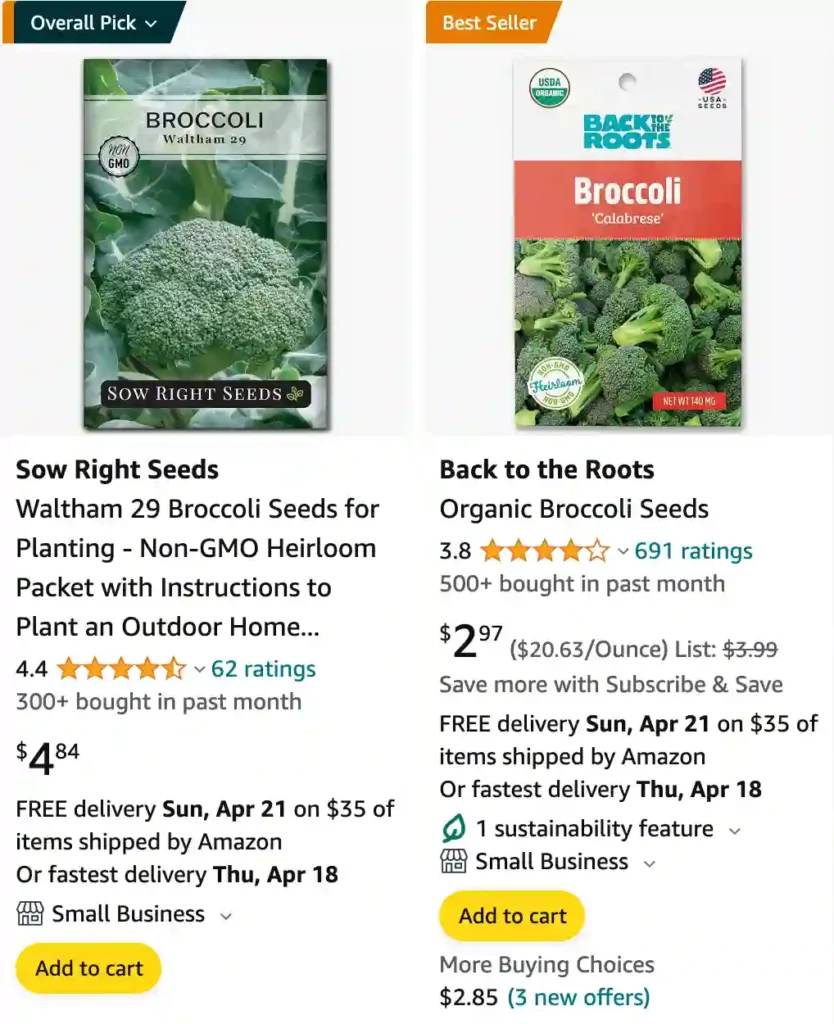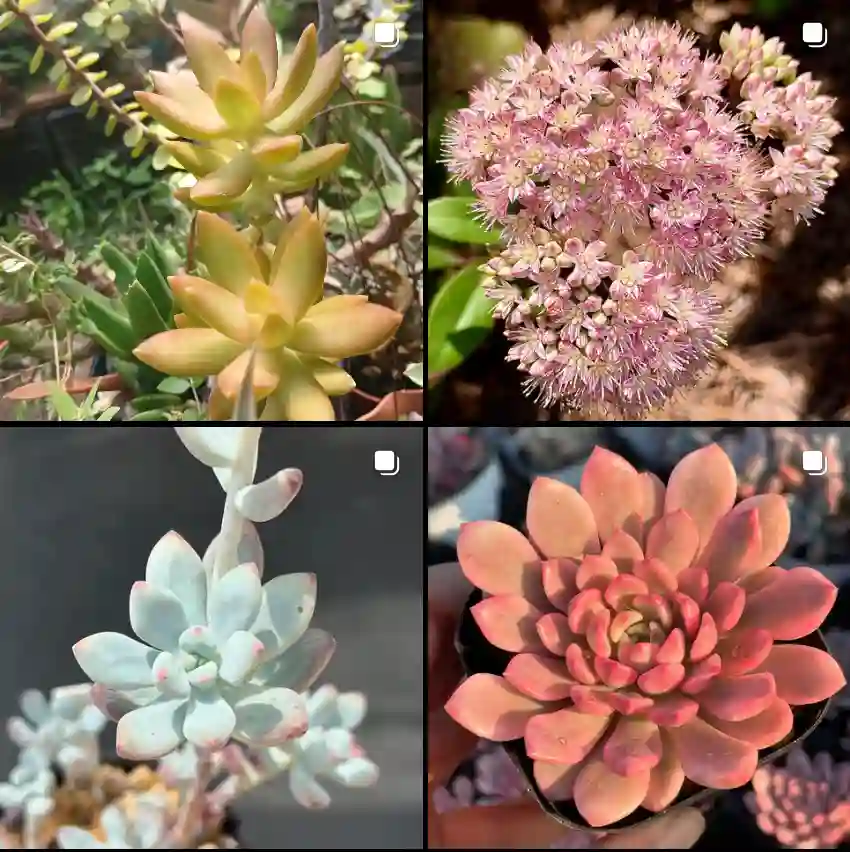
Broccoli – My Journey with Brassica oleracea var. italica
Broccoli has always been more than a vegetable to me. It’s a symbol of resilience, growth, and the joy of gardening. When I first started exploring Brassica oleracea var. italica, I was drawn to its vibrant green florets, which seemed like miniature trees swaying gently in the breeze. Little did I know that this cruciferous wonder would become a cornerstone of my culinary and gardening adventures.
42 Species in Genus Brassica
The Science Behind the Beauty
Broccoli belongs to the Brassicaceae family, which includes cauliflower, kale, and cabbage. Its botanical name, Brassica oleracea var. italica, reflects its Mediterranean roots. Packed with nutrients like vitamins C and K, fiber, and antioxidants, broccoli stands tall as a superfood. For me, understanding its nutritional profile added depth to my appreciation. I wasn’t just growing a vegetable; I was cultivating health.
What does broccoli plants look like?
Broccoli plants have a distinctive appearance; they’re usually tall and have thick stalks with large, dark green leaves. The heads, which are the edible part, form at the top of the stalks and are composed of tightly packed green buds. I remember seeing them in my grandmother’s garden, standing tall amidst the other vegetables, their vibrant green color standing out against the earthy tones of the soil.
Can dogs eat broccoli?
Yes, dogs can eat broccoli, but it’s important to give it to them in moderation. I found this out when I was researching healthy snacks for my pup. Broccoli is rich in vitamins and fiber, which can be beneficial for them, but too much can lead to digestive issues. I tried giving my dog small pieces as treats, and she loved them!
How to steam broccoli?
Steaming broccoli is one of the easiest and healthiest ways to cook it. I learned this from my mom, who often prepared it this way when I was growing up. To steam broccoli, I simply fill a pot with a few inches of water and bring it to a boil. Then, I place a steamer basket in the pot and add the broccoli florets. I cover the pot and let the broccoli steam for about 5-7 minutes until it’s tender but still bright green. It’s a simple method that helps retain the broccoli’s nutrients and flavor.
Is broccoli man made?
Broccoli is not man-made; it’s a naturally occurring vegetable that has been cultivated for centuries. I discovered this while reading about its origins. Broccoli is actually a member of the cabbage family and is closely related to cauliflower, Brussels sprouts, and kale. Its history dates back to ancient Rome, where it was prized for its health benefits and culinary versatility.
How to roast broccoli?
Roasting broccoli is a delicious way to bring out its natural sweetness and add a crispy texture. I learned this technique from a friend who loves to experiment with different cooking methods. To roast broccoli, I preheat the oven to 425°F (220°C) and toss the broccoli florets with olive oil, salt, and pepper on a baking sheet. Then, I spread them out in a single layer and roast for about 20-25 minutes, flipping halfway through, until they’re tender and caramelized. It’s a simple yet flavorful side dish that pairs well with almost any meal.
Can cats eat broccoli?
While cats can technically eat broccoli, it’s not recommended to include it in their diet regularly. I found this out when I was researching safe foods for my feline friend. Cats are obligate carnivores, meaning they need a diet primarily composed of meat to thrive. While a small amount of broccoli won’t harm them, too much can cause digestive upset. My cat showed little interest in broccoli when I offered her some, preferring her usual treats instead.
Can chickens eat broccoli?
Yes, chickens can eat broccoli, and it can be a healthy addition to their diet. I discovered this while learning about different treats to give my backyard chickens. Broccoli is packed with vitamins and minerals that are beneficial for them, including vitamin C and calcium. I started tossing them small pieces of broccoli as an occasional snack, and they pecked at it eagerly.
Can bearded dragons eat broccoli?
Bearded dragons can eat broccoli in moderation as part of a balanced diet. I found this out while researching the dietary needs of my pet lizard. Broccoli is high in fiber and vitamins, which can be beneficial for them, but it should only make up a small portion of their overall intake. I started offering my bearded dragon small pieces of steamed broccoli occasionally, and he seemed to enjoy it as a treat.
Can guinea pigs eat broccoli?
Yes, guinea pigs can eat broccoli, and it can be a nutritious addition to their diet. I learned this while researching suitable foods for my guinea pig. Broccoli is rich in vitamin C, which is essential for guinea pigs since they cannot produce it on their own. I started giving my guinea pig small pieces of raw broccoli as an occasional treat, and he eagerly nibbled on them.
Can rabbits eat broccoli?
Yes, rabbits can eat broccoli, but it should be given to them in moderation. I discovered this while researching the dietary needs of my pet rabbit. Broccoli is high in fiber and nutrients, which can be beneficial for rabbits, but too much can cause digestive issues. I started offering my rabbit small amounts of broccoli as an occasional treat, and he seemed to enjoy it.
Is broccoli low fodmap?
Yes, broccoli is low in FODMAPs, making it suitable for people with sensitive digestive systems. I found this out while researching foods that are gentle on the stomach. FODMAPs are fermentable carbohydrates that can cause digestive discomfort in some people, and broccoli is considered low in them. I started incorporating more broccoli into my meals to help manage my own digestive issues, and it made a noticeable difference.
Is broccoli good for weight loss?
Yes, broccoli can be beneficial for weight loss because it’s low in calories but high in nutrients and fiber. I learned this while exploring healthy foods to support my weight loss journey. Broccoli helps keep me feeling full and satisfied without consuming excess calories, making it a valuable addition to my diet. I started incorporating more broccoli into my meals, whether steamed, roasted, or added to salads, and I noticed a positive impact on my weight loss goals.
What to serve with broccoli cheese soup?
Broccoli cheese soup pairs well with a variety of dishes, but some of my favorite options include crusty bread, garlic breadsticks, or a simple side salad. I discovered these pairings through trial and error, finding what best complemented the creamy texture and rich flavor of the soup. Whether I’m serving it for lunch or dinner, these sides always enhance the meal and leave me feeling satisfied.
What to eat with broccoli cheddar soup?
Broccoli cheddar soup is delicious on its own, but I enjoy pairing it with crusty bread or a hearty sandwich for a more filling meal. I found this combination to be satisfying and comforting, perfect for chilly days or cozy nights in. The contrast of textures and flavors between the soup and bread elevates the dining experience, making it a meal I always look forward to.
Can tortoises eat broccoli?
Yes, tortoises can eat broccoli, but it should be given to them in moderation as part of a varied diet. I learned this while researching suitable foods for my pet tortoise. Broccoli is rich in vitamins and minerals that are beneficial for tortoises, but it should only make up a small portion of their overall intake. I started offering my tortoise small pieces of broccoli as an occasional treat, and he seemed to enjoy it.
Can ducks eat broccoli?
Yes, ducks can eat broccoli, but it should be given to them in moderation. I found this out while researching appropriate treats for my backyard ducks. Broccoli is a nutritious snack for ducks, providing them with essential vitamins and minerals. I started tossing them small pieces of broccoli as an occasional treat, and they eagerly gobbled them up.
Is broccoli GMO?
Broccoli itself is not genetically modified, but there are genetically modified varieties of broccoli available, such as those that are bred for pest resistance or increased nutrient content. I learned this while researching genetically modified foods. However, most of the broccoli available in stores is not genetically modified. Personally, I prefer to buy organic broccoli to avoid genetically modified varieties.
Can hamsters eat broccoli raw?
Yes, hamsters can eat raw broccoli, but it should be given to them in moderation. I found this out while researching suitable foods for my pet hamster. Broccoli is a nutritious snack for hamsters, providing them with essential vitamins and minerals. I started offering my hamster small pieces of raw broccoli as an occasional treat, and he seemed to enjoy nibbling on them.
Why am i craving broccoli?
Craving broccoli could be a sign that your body is in need of certain nutrients found in this vegetable. I discovered this when I found myself craving broccoli more often. Broccoli is packed with vitamins, minerals, and antioxidants that support overall health, so craving it could indicate that your body is seeking these nutrients. I started incorporating more broccoli into my meals to satisfy my cravings, and it helped me feel more energized and nourished.
Broccoli vs Spinach
I find that broccoli’s crunch and robust flavor make it a hearty addition to meals, whereas spinach, with its tender leaves and milder taste, is perfect for salads and quick sautés, giving me a lighter, fresher option when I’m craving something less filling.
Broccoli vs Asparagus
Broccoli’s earthy, slightly bitter flavor works great in stir-fries and casseroles, but I love the crisp, subtly sweet crunch of asparagus as a side dish, especially when it’s roasted with a touch of olive oil and garlic.
Broccoli vs Green Beans
While broccoli provides a more substantial texture and flavor that holds up well in heavier dishes, green beans add a delightful snap and bright freshness that’s perfect for quick sautéed sides or as a colorful addition to salads.
Broccoli vs Kale
I appreciate broccoli for its versatility and satisfying bite in dishes like soups and stir-fries, but kale, with its hearty texture and slightly peppery taste, stands out in my meals when I want a robust, leafy green for salads or smoothies.
Broccoli and the Bigger Picture
On a broader level, broccoli cultivation has environmental significance. It’s a crop that supports sustainable agriculture when grown organically. Companion planting with marigolds and onions can deter pests naturally, reducing the need for chemical interventions.
For me, this aligns with my philosophy of gardening as a harmonious dance with nature. Growing broccoli isn’t just about food; it’s about fostering biodiversity and contributing to a healthier planet.
Final Thoughts
Broccoli has become an integral part of my life, from garden to plate. Each season, I look forward to the cycle of planting, nurturing, and harvesting. It’s a journey filled with learning, satisfaction, and delicious rewards. Whether it’s in the form of a steaming bowl of soup or a crisp stir-fry, broccoli represents the joy of creation and the beauty of self-sustainability.
Through my experience with Brassica oleracea var. italica, I’ve discovered not just a vegetable, but a way to connect with nature, nurture my body, and find solace in the rhythm of growth. To anyone considering growing or cooking with broccoli, I say: dive in. You won’t just cultivate a plant—you’ll cultivate a deeper connection with life itself.
If i die, water my plants!

